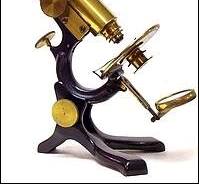Due to the critical role of microscope in microbiological and other biomedical researchers, it is very important that microscopes (which allow us to see microorganisms distinctly) are cautiously used and preserved in order to ensure their continued usage and value during laboratory undertakings.
Microscopes (whether electron or compound light) are required for the visualization of microorganisms and, without a magnifying instrument like it, it would have been impossible for us to see clearly and understand the major workings of the microbial world.
Thus it is very important that all users of the microscopes ensure that they take proper care of them by keeping to some of the following guidelines as they use these all important equipment in the microbiology laboratory:
- The lens system of microscopes should be properly cleaned using the appropriate lens tissue and cleaning solvent prior to and after usage in order to ensure a greater efficiency when in use.
- The microscope should be carried at the base and arm parts and carefully moved from one place to another in order to avoid dropping.
- Cover slips should always be used when viewing wet preparations (i.e. unstained specimens).
- When viewing a stained preparation, immersion oil should always be used with the oil immersion objective (100x) in order to achieve a high resolution. The oil immersion objective must make contact with the immersion oil and not the slide.
- No part of the microscope should be dismounted or removed without the permission of instructor or scientist in charge of it.
- The adjustment knobs and stage adjusters should be carefully used in order to avoid smashing the slide carrying the specimen to be examined.
- The bench on which the microscope will be placed must be a balanced bench and, it should be free from all obstructions during its usage.
- Both eyes and not one should be used to look through the microscope during the observation of a microscope or specimen.
- Cleaning of the microscope should be only done using authorized cleaning materials, and the manufacturers instruction should be kept during such procedures.
- Ocular lenses and objective lenses that are not in use should be carefully kept away in tight containers.
- Proper light illumination and good stage adjustment should be observed in order to get optimal visualization and focus.
- Always ensure that the microscope is covered with its dust cover after use in order to prevent dust from settling on it.
- Disconnect the microscope from the source of electricity after use.
REFERENCES
Beck R.W (2000). A chronology of microbiology in historical context. Washington, D.C.: ASM Press.
Cheesbrough, M (2006). District Laboratory Practice in Tropical countries Part I Cambridge
Chung K.T, Stevens Jr., S.E and Ferris D.H (1995). A chronology of events and pioneers of microbiology. SIM News, 45(1):3–13.
Dictionary of Microbiology and Molecular Biology, 3rd Edition. Paul Singleton and Diana Sainsbury. 2006, John Wiley & Sons Ltd. Canada.
Glick B.R and Pasternak J.J (2003). Molecular Biotechnology: Principles and Applications of Recombinant DNA. ASM Press, Washington DC, USA.
Goldman E and Green L.H (2008). Practical Handbook of Microbiology, Second Edition. CRC Press, Taylor and Francis Group, USA.
Madigan M.T., Martinko J.M., Dunlap P.V and Clark D.P (2009). Brock Biology of microorganisms. 12th edition. Pearson Benjamin Cummings Publishers. USA.
Nester E.W, Anderson D.G, Roberts C.E and Nester M.T (2009). Microbiology: A Human Perspective. Sixth edition. McGraw-Hill Companies, Inc, New York, USA.
Prescott L.M., Harley J.P and Klein D.A (2005). Microbiology. 6th ed. McGraw Hill Publishers, USA.
Willey J.M, Sherwood L.M and Woolverton C.J (2008). Harley and Klein’s Microbiology. 7th ed. McGraw-Hill Higher Education, USA.
Discover more from #1 Microbiology Resource Hub
Subscribe to get the latest posts to your email.



